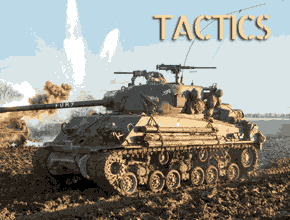The Obiekt 279, or Object 279, (Объект 279) was a Soviet experimental heavy tank developed by late 1959. It was called a "special purpose tank" intended to fight on cross country terrain that was inaccessible to conventional tanks. But also for a heavy breakthrough tank, to be operationally disposed of by the Supreme Command Reserve. However a serie of reasons eventually canceled mass production, notably strict opposition of Nikita Khrushchev to heavy tanks in 1960, but also cost, complexity and not that stellar results in swampy terrain.
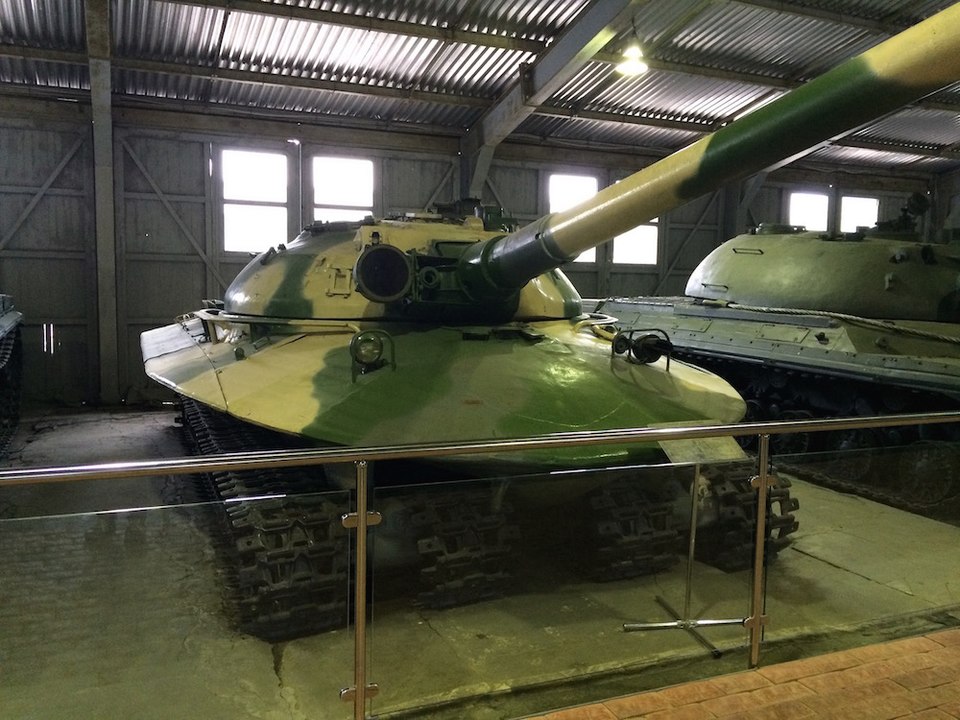
In Kubinka
This tank was developed at the Kirov Plant, Leningrad by a team under engineer L. Troyanov. Work started in 1957, based on heavy tank requirements developed in 1956,with a pre-production completed at the end of 1959. The core of the design compared to any other other tank in Soviet inventory was its increased cross-country capability, featuring in the end design, no less than forty seven-track running gear, mounted on two longitudinal and rectangular hollow beams used also as fuel tanks. This have these tanks virtually a "four track" system unlike anything else built at the time. Even snow-track vehicles had large tracks but still on two sets of classic roadwheels.
By having tracks virtually under the whole hull, this enabled an unprecedented ground pressure for such heavy tank at 0.6 kg/cm2 (~8.5psi). In theory, these tanks were really capable to deal with all types of environements, and compared to regular tanks, which already were more capable off-road than standard and even 4x4 wheeled vehicles, especially in mud, sand and snow, they still had their limits, especially when carrying their own weight over 60 tonnes.
This enabled full protection against APDS and shaped charge thanks to a large cast irregular shape structure of variable thickness and slope going to the rear. The all-cast front part of the hull had inserts of thin armour panels to protect against HEAT projectiles, running around the edges front and sides, all cast and with similar protective armor panels. Above the hull was mounted an all-cast turret, with a maximum armor thickness of 319 mm forward and hemispheric, with addons of anti-HEAT protective panels. The turret ring was also heavily protected and overall, if this looks like the T-64 turret, this was not by accident. This was completed with the traditional all-rounded NBC colective protection of the crew (chemical, biological, radiological, nuclear), and auto fire-fighting systems in the engine and combat compartment. The drive was located in the middle of the hull, at the foot of the massive turret, with the transmission close to him. For active smoke protection there were no dischargers but instead the same smoke laying system over the exhaust as other Soviet tanks. There was also an internal spall liner and a heating and cooling system capable of producing overpressure.
The Soviet military ceased to operate heavy tanks in 1960 altogether. Weight limit was now 50 metric tons not counting extra equipment.
The relative complexity of the demultiplied gearbox, increased training was also a factor.
On July 22, 1960, Object 249 was demonstrated at the range of Kapustin Yar in front of Nikita Khrushchev. The latter strictly forbade even tanks above 37 metric tons and cancelled the entire program of heavy tanks. Khrushchev also preferred guided missile tanks, and pushed for the adoption of the IT-1.
Another reason, the Soviet military wanted tanks capable of crossing most bridges, notably in the homeland, for a defence in depth.
Last reason, Object 249 presented a lot of issues, exposed when the running gear was tested, such as efficiency loss in swampy crossings and other issues.
Last but not least, a complex and expensive production, as well as maintenance and repair.
Design
Development

In Kubinka
This tank was developed at the Kirov Plant, Leningrad by a team under engineer L. Troyanov. Work started in 1957, based on heavy tank requirements developed in 1956,with a pre-production completed at the end of 1959. The core of the design compared to any other other tank in Soviet inventory was its increased cross-country capability, featuring in the end design, no less than forty seven-track running gear, mounted on two longitudinal and rectangular hollow beams used also as fuel tanks. This have these tanks virtually a "four track" system unlike anything else built at the time. Even snow-track vehicles had large tracks but still on two sets of classic roadwheels.
By having tracks virtually under the whole hull, this enabled an unprecedented ground pressure for such heavy tank at 0.6 kg/cm2 (~8.5psi). In theory, these tanks were really capable to deal with all types of environements, and compared to regular tanks, which already were more capable off-road than standard and even 4x4 wheeled vehicles, especially in mud, sand and snow, they still had their limits, especially when carrying their own weight over 60 tonnes.
Running Gear of the Object 279
In addition to these two sets of twin tracks, each using six pairs of cast roadwheels, there was a pair of forward idlers and rear drive spockets. The tracks returned on three return rollers. However one inconvenient was their height. It was decided at design phase to give them a much more advanced suspension system, well before the T-64. The suspension was indeed made hydro-pneumatic, with an arm for each pair of roadwheel. In total they had 48 roadwheels and 24 hydropneumatic arms, four sprockets and four idlers, twelve returned rollers and four sets of unrubberized tracks.Running Gear
The Object 279 was equipped with the powerful 1000 hp 2DG-8M diesel engine. This enable this 60 metric ton freak to reach 55 km/h (34mph) and still have arange of around 300 km (186 miles) with its single fuel tank and external ones. The transmission was very peculiar due to the arrangement, with driving arms running through both "pontoons" below the hull, and linked to a complex hydrotransformer with torque converter and three-speed planetary gearbox. The track adjuster was of the worm-type. The track chain ran along the whole track length. This tank also had a hull to match, which UFO shape (or flying saucer) combined well slowed shapes to maximize armour while providing a form of "buyoyancy". It was especially well designed to manage swampy terrain, soft soils, areas with cut trees (like after a nuclear blast) and managed to go over Czech hedgehogs or any possible antitank obstacle, as a true breakthrough tank.Armor and protection
The hull, with its very odd design, was quite large, with a ratio of 1.3/2 and a diving, rounded face unlike anoy other soviet tank at the time, a compled sloped structure with cast elements, and going aft until an also rounded, but shorter "stern". It was almost shaped like a boat. This made for very angular sides, both above and below to deflect any incoming round by maximizing artifial thickness, in that case an impressive 269 mm (10.6 in) all over the elliptical shield.This enabled full protection against APDS and shaped charge thanks to a large cast irregular shape structure of variable thickness and slope going to the rear. The all-cast front part of the hull had inserts of thin armour panels to protect against HEAT projectiles, running around the edges front and sides, all cast and with similar protective armor panels. Above the hull was mounted an all-cast turret, with a maximum armor thickness of 319 mm forward and hemispheric, with addons of anti-HEAT protective panels. The turret ring was also heavily protected and overall, if this looks like the T-64 turret, this was not by accident. This was completed with the traditional all-rounded NBC colective protection of the crew (chemical, biological, radiological, nuclear), and auto fire-fighting systems in the engine and combat compartment. The drive was located in the middle of the hull, at the foot of the massive turret, with the transmission close to him. For active smoke protection there were no dischargers but instead the same smoke laying system over the exhaust as other Soviet tanks. There was also an internal spall liner and a heating and cooling system capable of producing overpressure.
Armament
The Object 279 was given the new 130 mm M-65 rifled gun. Its secondary armament was a 14.5 mm KPVT coaxial machine gun, with 800 rounds. No option for a second AA mount was offered though. The main gun and coaxial were stabilized together in two planes, by the "Groza" stabilization system. 24 rounds of ammunition could be carried, separated charge and shell. This was probably the least impressive spec. The gun came out with a smoke recuperator and muzzle brake, semi-automatic loading system for a rate of fire of 5–7 rounds/minute. The firing control system started with an optical rangefinder, but also an auto-guidance system and completed by a L2 night-sight with infrared searchlight like othr Soviet tanks of the time, mounted on an arm with the elevation system. An improved variant of the gun was later tested on Object 785 much later, but it was never adopted.specifications | |
| Dimensions (L-w-h) | 6.77/11.085 m x 3.4 x 2.639 m |
| Weight | 60 metric tons |
| Crew | 4 (driver, loader, gunner, commander) |
| Propulsion | 2DG-8M diesel 1,000 hp (750 kW) |
| Speed | 55 km/h (34 mph) |
| Range (on flat) | 300 km (190 mi) |
| Armament | 130 mm M-65 L/60 (24), 14.5mm KPVT (800) |
| Armor | 319–217 mm turret front and side, 269/258/182 mm |
| Total production | |
Fate
The project was abandoned ny several reasons:The Soviet military ceased to operate heavy tanks in 1960 altogether. Weight limit was now 50 metric tons not counting extra equipment.
The relative complexity of the demultiplied gearbox, increased training was also a factor.
On July 22, 1960, Object 249 was demonstrated at the range of Kapustin Yar in front of Nikita Khrushchev. The latter strictly forbade even tanks above 37 metric tons and cancelled the entire program of heavy tanks. Khrushchev also preferred guided missile tanks, and pushed for the adoption of the IT-1.
Another reason, the Soviet military wanted tanks capable of crossing most bridges, notably in the homeland, for a defence in depth.
Last reason, Object 249 presented a lot of issues, exposed when the running gear was tested, such as efficiency loss in swampy crossings and other issues.
Last but not least, a complex and expensive production, as well as maintenance and repair.
Illustrations

Gallery
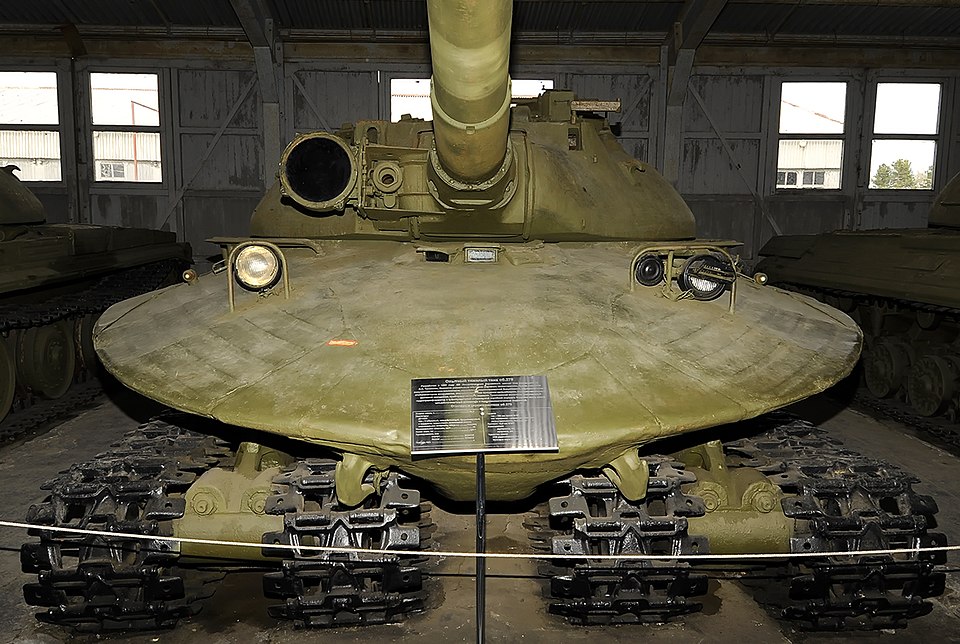
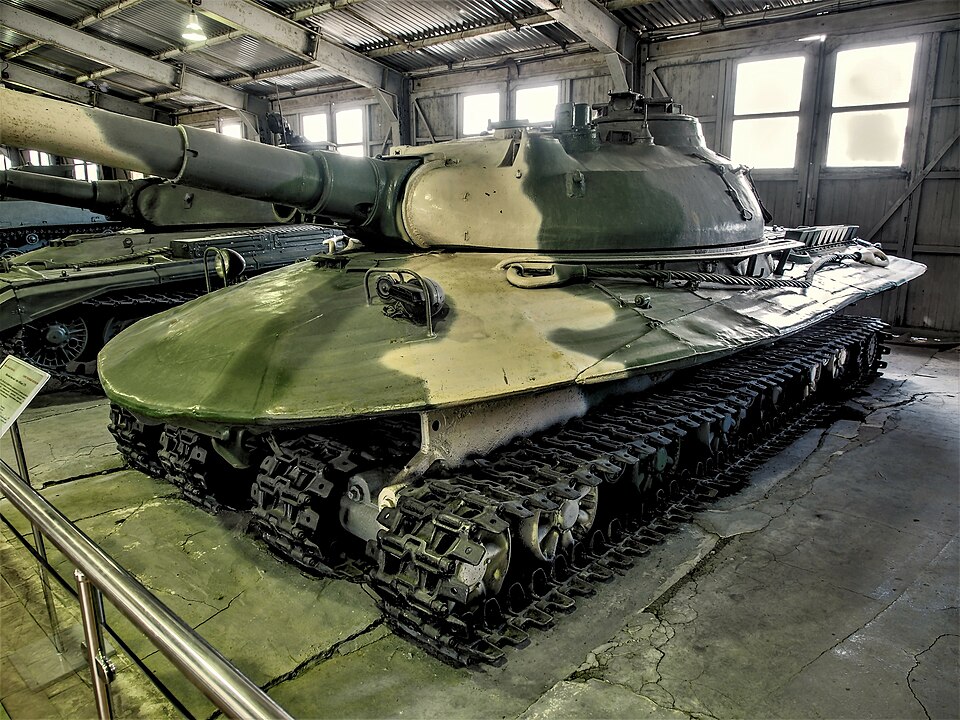
Related links
armor.photos/meshwar.vistcom.ru
legion.wplus.net
Category:Object_279
ok.ya1.ru/
see-nuke-surviving-object-279
popmech.ru
en.wikipedia.org
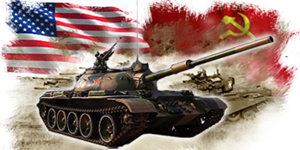
Cold War Tanks


































Cold war tanks posters
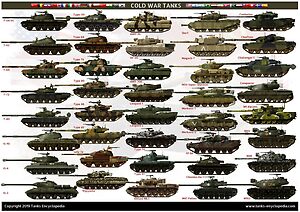
Cold War Main Battle Tanks
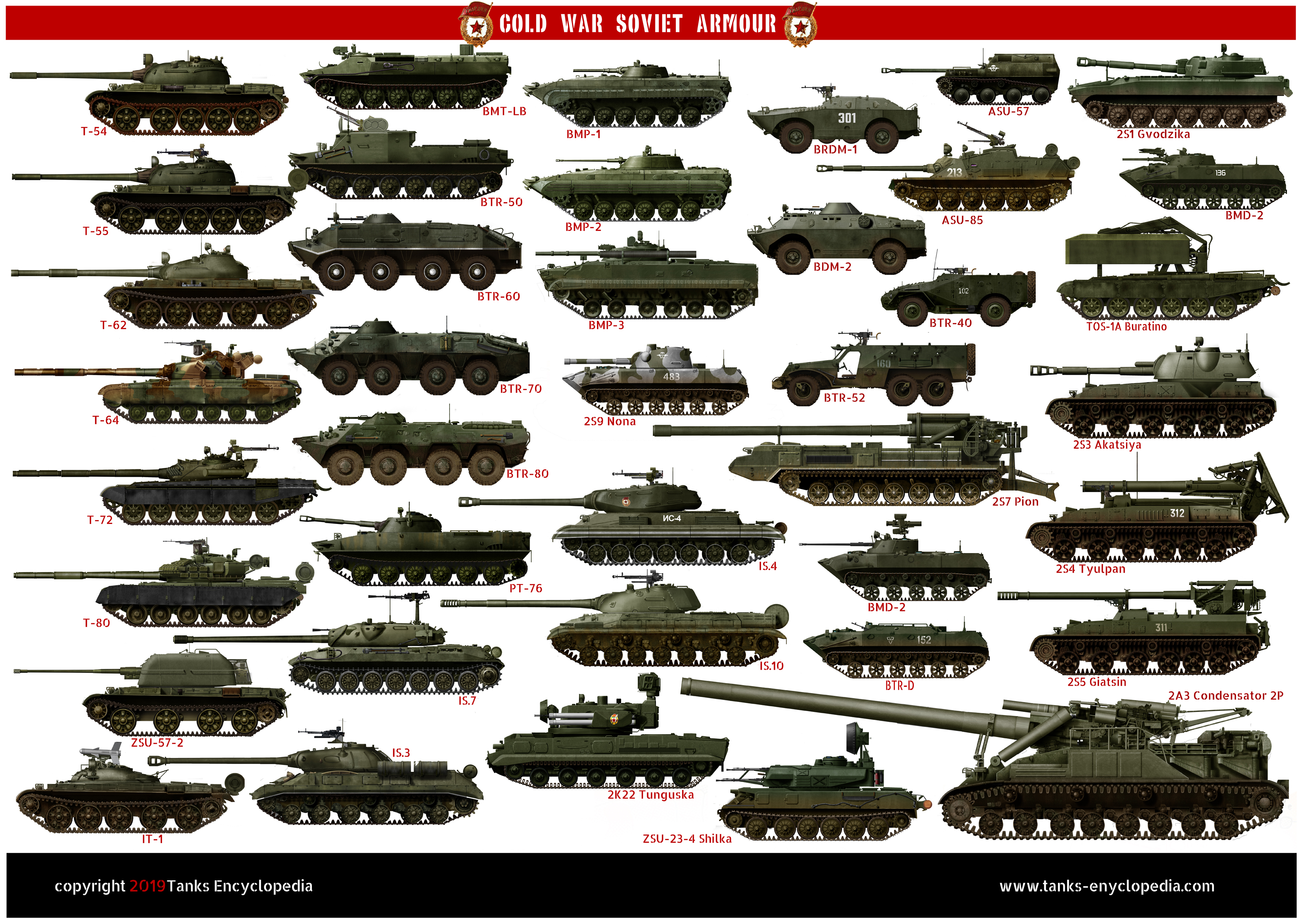
Cold War Soviet Army
Museums, Movies, Books & Games
The Tanks and Armor in pop culture
Tanks and armored vehicles in general are only really grasped when seen first person: The mass, the scale, it's all there. Explore also the way tanks were covered in the movie industry, in books and in video games.Movies:
Best tanks movie on warhistoryonline.com
On imdb.com
On bestsimilar.com/
miltours.com
liveabout.com/
watchmojo.com
Video Games:
pcgamesn.com
historyhit.com
levvvel.com
vg247.com/best-tank-games
mmobomb.com/
alienwarearena.com
